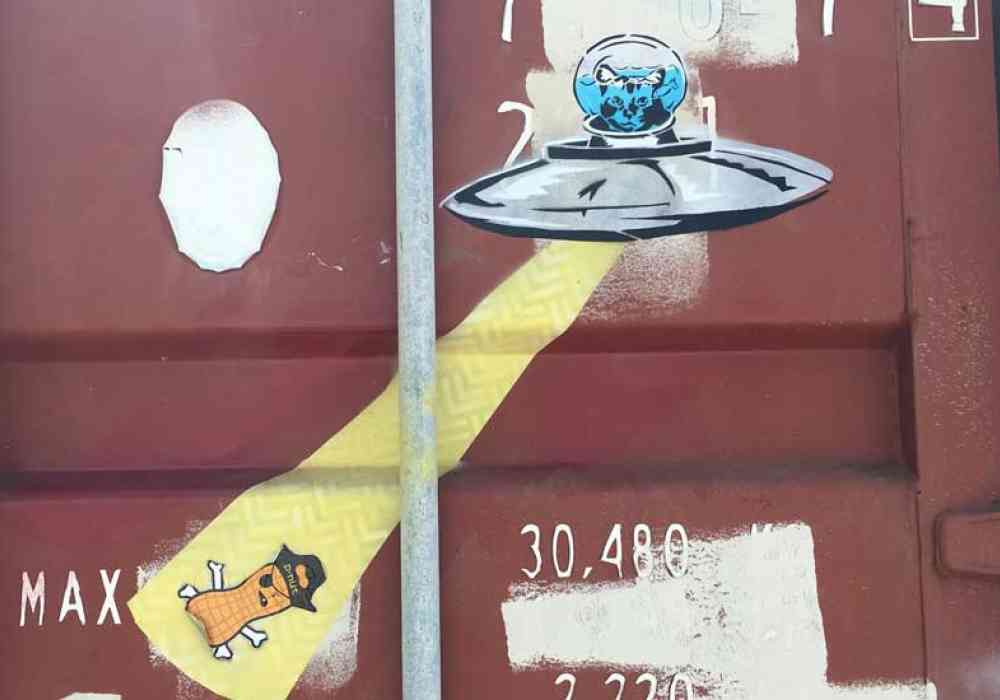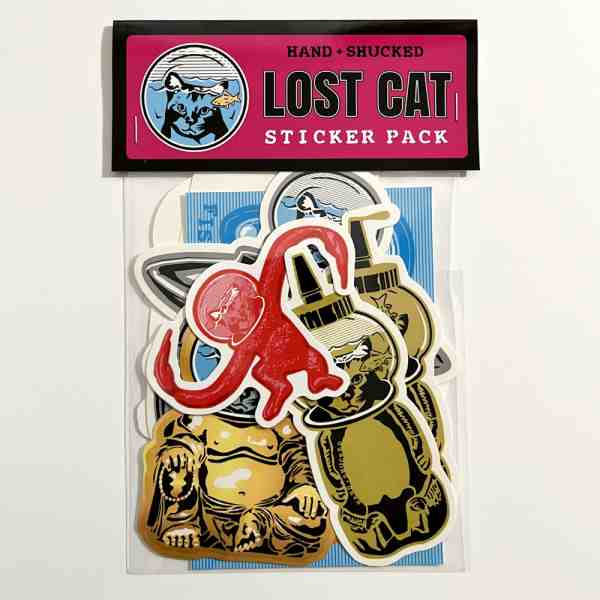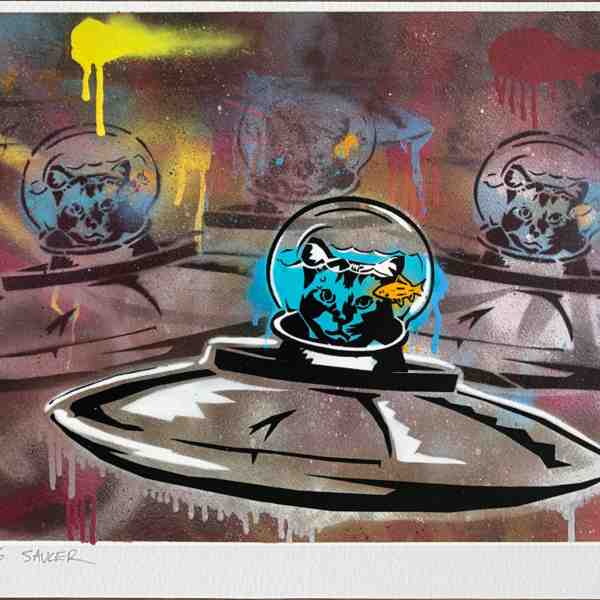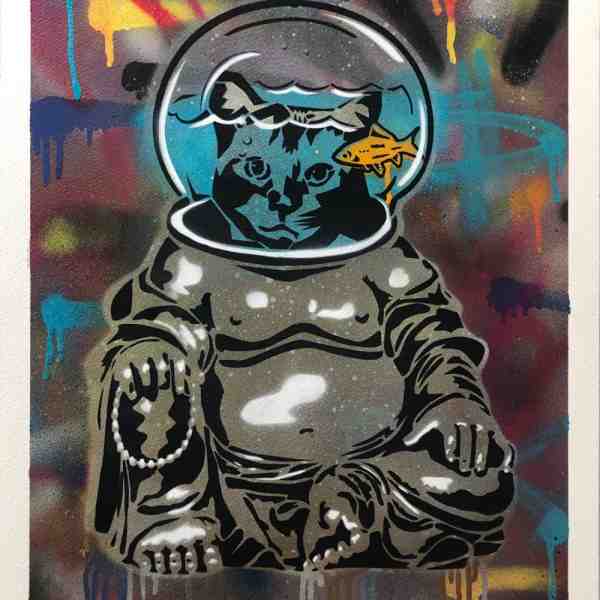Graffiti Styles Decoded: A Guide to 18 Artistic Expressions
Understanding Graffiti Styles: A Quick Dive
Graffiti styles offer an incredible array of artistic expressions, evolving from simple tags to complex street art masterpieces. These styles form a vibrant part of urban culture and serve as powerful modes of personal and social commentary. Here’s a quick rundown of some common graffiti styles:
- Tags – The simplest form, often just a stylized signature.
- Throw-ups – Slightly more intricate, usually featuring bubble letters.
- Wildstyle – Complex and interlocked letters that are difficult to read.
- Stencils – Quick and replicable, using cut-out shapes for designs.
- 3D Graffiti – Creates realistic depth, painted on two-dimensional surfaces.
In cities worldwide, street art transforms forgotten walls into canvases full of life and meaning. Street art challenges norms and invigorates urban landscapes, inviting viewers to reinterpret public spaces and reflect on broader social narratives. It spans multiple styles, each with unique characteristics that contribute to the diversity of this dynamic art form.
I’m Chris Higgins, the creative mind behind Handshucked Art and Designs. With more than a decade of experience in graphic arts and an eye for bold illustration, I’ve cultivated a deep appreciation for graffiti styles. This enthusiasm drives my work, blending traditional techniques with modern street art influences. Let’s explore these incredible styles together.
The Evolution of Graffiti Styles
The journey of graffiti styles is as colorful and dynamic as the art itself. From humble beginnings to bold artistic statements, graffiti has carved out a significant place in urban culture. Let’s explore how this evolution unfolded, focusing on key styles that have shaped the graffiti landscape.
Tags: The Birth of Graffiti
Tags are the roots of graffiti. They represent the artist’s signature or pseudonym, usually crafted quickly with one color. Tags are often the first step for graffiti writers, serving as a personal mark on the urban canvas. Early pioneers like Cornbread in Philadelphia and TAKI 183 in New York City turned their tags into iconic symbols, sparking a movement that spread globally.
Throw-ups: Quick and Bold
Throw-ups take tags to the next level. These are slightly more complex, often featuring bubble letters and two colors. They’re designed for speed and visibility. Artists like JA One and Oker have mastered this style, using high-pressure spray paint to create quick, eye-catching designs. Throw-ups are a staple in graffiti because they balance speed with a bold visual impact.
Wildstyle: A Complex Dance of Letters
Wildstyle is where graffiti gets intricate. This style features interlocking letters, arrows, and decorative elements, making it challenging to read for the uninitiated. It’s a visual puzzle, showcasing the artist’s skill and creativity. Tracy 168, a legendary figure in graffiti, is credited with pioneering this complex and captivating style.
Murals: From Vandalism to Art
Murals represent graffiti’s change from vandalism to recognized art. These large-scale works are often commissioned and can cover entire walls. Murals blend graffiti with street art, offering a platform for artists to express social and political messages. They bring color and life to urban environments, challenging perceptions of graffiti as purely destructive.
Stencil Graffiti: Art in a Flash
Stencil graffiti offers a quick and replicable way to spread art and messages. Artists like Banksy have popularized this style, using stencils to create detailed images that often carry political or social commentary. Stencils allow for rapid deployment, making them a favorite for artists who want to make a statement with precision and speed.
These graffiti styles are just the beginning. Each one tells a story of innovation and expression, reflecting the diverse voices of urban artists. As we continue to explore graffiti, we’ll see how these styles and others contribute to the rich mix of street art.
18 Iconic Graffiti Styles
Graffiti is a vibrant expression of urban art, and it comes in many styles. Let’s explore some of the most iconic graffiti styles and see what makes each one unique.
Tags: The Birth of Graffiti
Tags are the simplest form of graffiti, acting as the artist’s signature. Often done in one color, these stylized signatures are the foundation of graffiti culture. Cornbread, a pioneer from Philadelphia, is known for popularizing this style back in 1965.
Throw-ups: Quick and Bold
Throw-ups are a step up from tags, featuring bubble letters and often two colors. They are designed for speed and visibility. Artists like JA One and Oker have perfected this style, using high-pressure spray paint to make quick, eye-catching designs.
Two Letter Throw-ups: Speed in Simplicity
Two letter throw-ups focus on speed and simplicity, often using just the first two letters of an artist’s tag. This style is perfect for tight spaces and quick execution, maintaining the boldness of a full throw-up with less effort.
Hollows: Outlines Only
Hollows are throw-ups without the fill, leaving just the outline of the letters. This style requires great can control because mistakes are harder to hide. The simplicity of one color highlights an artist’s precision and skill.
Straight Letters: Bold and Readable
Straight letters feature big, bold, and easily readable letters, often with the artist’s unique flair. They balance speed with style, using 2-4 colors to make a statement. In London, a silver and black straight letter piece is known as a “Dub.”
Full Colour Pieces: Art in Detail
Full colour pieces take straight letters further, adding 3D effects, shadows, and backgrounds. These pieces use multiple colors and often feature characters, creating a more detailed and vibrant work of art.
Wildstyle: Complex and Captivating
Wildstyle is the most intricate of graffiti styles, with complex interlocking letters and decorative elements. It’s a visual puzzle, showcasing an artist’s creativity and skill. Tracy 168 is a legendary figure known for pioneering this challenging style.
Blockbuster: Massive and Bold
Blockbuster graffiti features massive letters painted on large surfaces, like highways. The aim is to be seen from afar, using bold colors and simple designs to grab attention.
Murals: Street Art on a Grand Scale
Murals blend graffiti with street art, often commissioned to cover entire walls. They express social and political messages, changing urban spaces and challenging the perception of graffiti as mere vandalism.
Roller Graffiti: Reaching New Heights
Roller graffiti uses paint rollers to create large-scale works in hard-to-reach places. This style is about making a big impact, often on rooftops or other liftd surfaces.
Anti-style: Breaking the Rules
Anti-style is all about non-traditional graffiti, embracing a messy, hipster aesthetic. It’s a rebellion against the polished look of other styles, focusing on raw expression.
Stickers: Art on the Move
Stickers are a form of graffiti that involves placing adhesive designs in public spaces. Known as sticker bombing, this style often highlights social issues and allows for rapid dissemination of art.
Stencils: Precision and Speed
Stencils offer a quick way to create detailed images. Artists like Banksy use this technique to spread political messages with precision and speed, making it a favorite for those looking to make a statement.
Heaven Spot: High-Risk, High-Reward
Heaven spots are graffiti pieces painted in high-up, hard-to-reach places. The risk involved in accessing these spots adds a layer of thrill and prestige to the artwork.
Wheat Paste: Art with a Message
Wheat paste is used by street artists and activist groups to affix posters to surfaces. It’s a method for spreading art and messages quickly and effectively.
Etch Graffiti: Permanent Impressions
Etch graffiti uses acid solutions to create designs on glass surfaces. This style is controversial due to its permanent nature but is favored for its unique look.
Calligraphy Graffiti: Neat Letters
Calligraphy graffiti, or calligraffiti, blends traditional lettering with graffiti style. It brings an neat touch to urban art, showcasing the beauty of written words.
Pichação: Cryptic and Bold
Originating in São Paulo, pichação features cryptic, aggressive lettering. It’s a unique style that covers buildings and walls, known for its rebellious spirit and bold statements.
These graffiti styles showcase the diversity and creativity within street art. Each style tells its own story, contributing to the rich mix of urban expression.
Techniques and Tools in Graffiti
Graffiti art thrives on creativity and the clever use of various tools and techniques. Let’s explore the essentials that artists use to bring their visions to life.
Spray Paint: The Classic Choice
Spray paint is the go-to medium for most graffiti artists. It’s versatile, allowing for smooth gradients, vibrant colors, and intricate details. Artists can create everything from simple tags to complex wildstyle pieces with spray paint. Its quick-drying nature makes it ideal for street art, where time is often of the essence.
Emulsion Paint: Covering Large Areas
For larger surfaces or when preparing a wall, emulsion paint is a practical choice. Artists use it with paint rollers to create a neutral background, ensuring that previous graffiti doesn’t interfere with their new work. This is especially useful for murals or blockbuster styles, where coverage and visibility are key.
Paint Rollers: Reaching New Heights
Paint rollers are indispensable for creating large-scale graffiti, especially in hard-to-reach areas. By using extended rollers, artists can paint high up on walls or across wide surfaces without needing ladders. This technique is a favorite for roller graffiti, allowing for bold, impactful pieces that stand out from a distance.
Markers: Fine Detail and Precision
Markers provide precision for smaller details and intricate designs. They’re often used for tagging, where artists create their stylized signatures. Markers come in various sizes and colors, perfect for adding finishing touches or working on smaller surfaces where spray paint might be too broad.
These tools—spray paint, emulsion paint, paint rollers, and markers—are the backbone of graffiti art. Each offers unique possibilities, enabling artists to express themselves in diverse and creative ways. Understanding these techniques helps us appreciate the skill and innovation behind every piece of graffiti.
Frequently Asked Questions about Graffiti Styles
What are the 3 major types of graffiti?
When exploring graffiti, three major styles often come up: tags, throw-ups, and wildstyle.
- Tags are the most basic form of graffiti, essentially the artist’s signature. It’s usually a one-color, stylized name or identifier. Tags are the foundation of graffiti culture and can be seen everywhere, from subway cars to alley walls.
- Throw-ups are a step up from tags. They often feature bubble letters and are done quickly with multiple colors. This style is more complex than a tag but still prioritizes speed and visibility.
- Wildstyle is the most intricate and complex of the three. It involves interlocking letters and decorative elements like arrows and spikes, making it challenging to read. Wildstyle showcases the artist’s skill and creativity, often requiring more time and effort to complete.
What is the hardest style of graffiti?
Wildstyle is widely considered the hardest graffiti style. Its complexity lies in the abstract and elaborate designs that make up each piece. Artists must have a deep understanding of letter structure and design to create a cohesive and visually appealing wildstyle work. It demands precision, creativity, and a lot of practice to master.
What type of graffiti is illegal?
Graffiti, in many places, is considered illegal when it involves vandalism or defacing property without permission. This includes any graffiti done on public or private property without the owner’s consent. While some cities have designated areas for legal graffiti, unauthorized work, regardless of its artistic merit, is often classified as vandalism. This legal status can lead to fines or other penalties for artists caught in the act.
Conclusion
At Handshucked Designs, we celebrate the vibrancy and creativity of street art. Our work is deeply inspired by the myriad of graffiti styles that have evolved over the years. From the bold simplicity of tags to the intricate designs of wildstyle, each piece tells a unique story and adds color to our urban landscapes.
Our commitment to creating unique artworks is reflected in our collections, such as the “Lost Cat” series and the “Hungry Manatee” series. These collections blend traditional artistry with the raw energy of street art, resulting in pieces that are both distinctive and engaging.
Street art is not just about covering walls with paint; it’s about making a statement and connecting with the community. It challenges societal norms and encourages dialogue. At Handshucked, we aim to capture this spirit in our designs, bringing a touch of street art into everyday life.
Explore our creations and find how we incorporate the essence of graffiti into our original art and hand-printed apparel. Visit our Handshucked Designs page to learn more about our offerings and join us in celebrating the dynamic world of street art.





